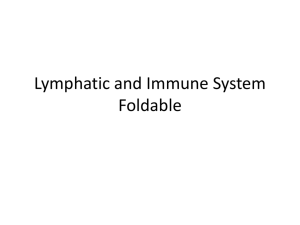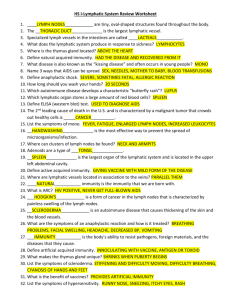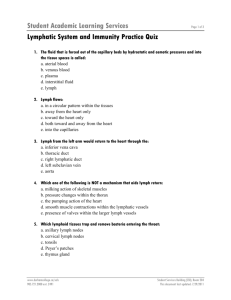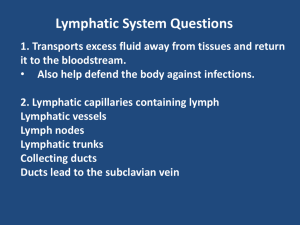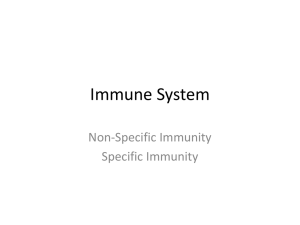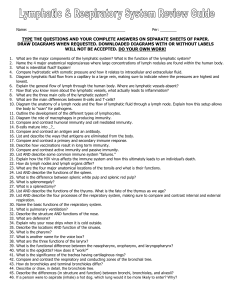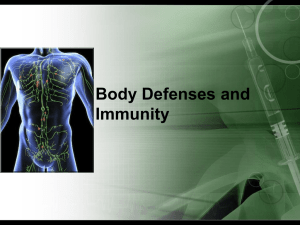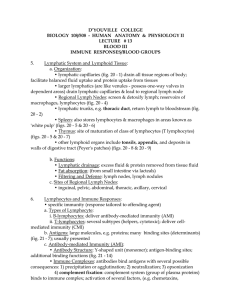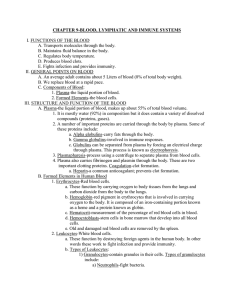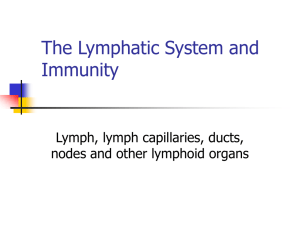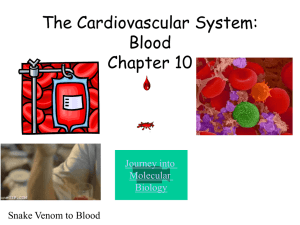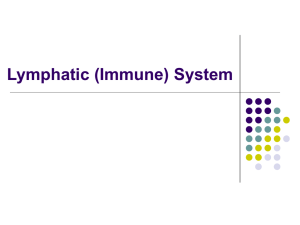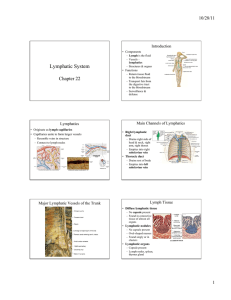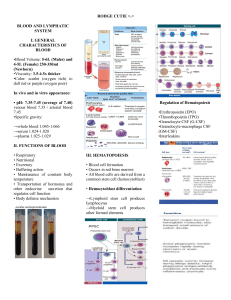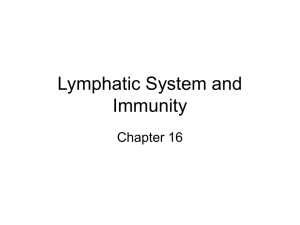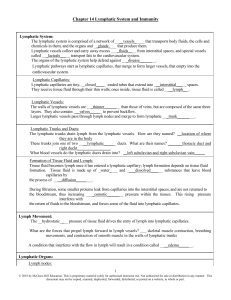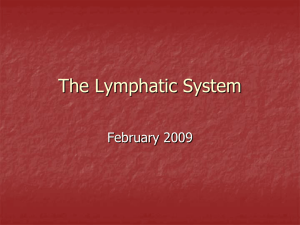MED 154: Chapter 16 Worksheet The is closely associated with the
advertisement
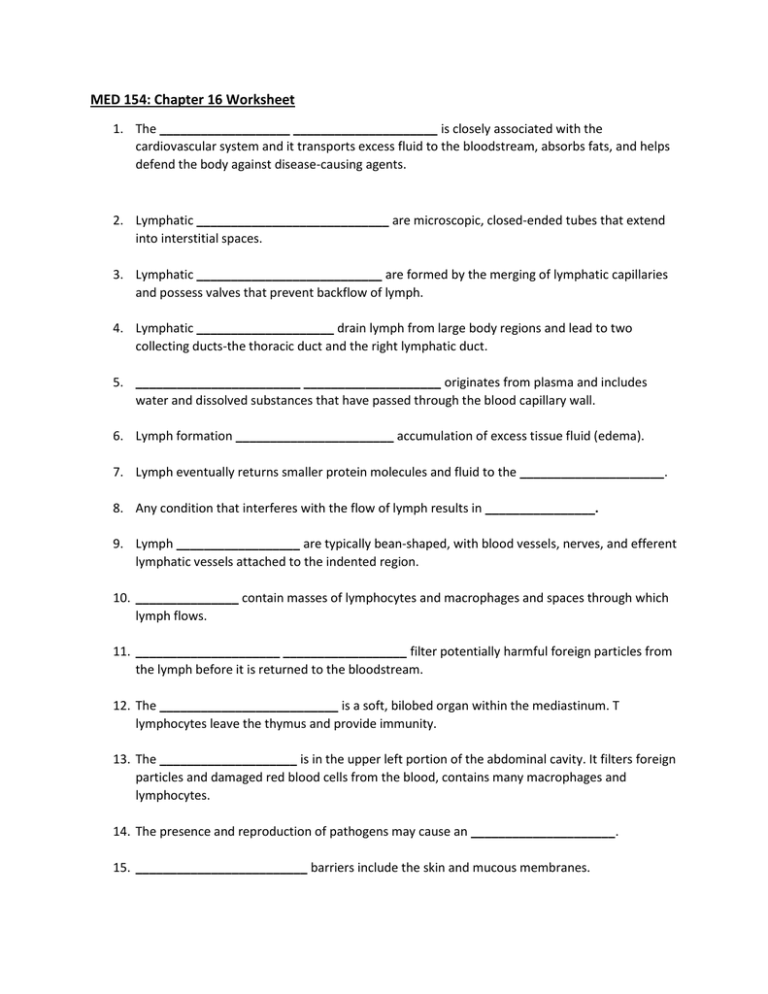
MED 154: Chapter 16 Worksheet 1. The ___________________ _____________________ is closely associated with the cardiovascular system and it transports excess fluid to the bloodstream, absorbs fats, and helps defend the body against disease-causing agents. 2. Lymphatic ____________________________ are microscopic, closed-ended tubes that extend into interstitial spaces. 3. Lymphatic ___________________________ are formed by the merging of lymphatic capillaries and possess valves that prevent backflow of lymph. 4. Lymphatic ____________________ drain lymph from large body regions and lead to two collecting ducts-the thoracic duct and the right lymphatic duct. 5. ________________________ ____________________ originates from plasma and includes water and dissolved substances that have passed through the blood capillary wall. 6. Lymph formation _______________________ accumulation of excess tissue fluid (edema). 7. Lymph eventually returns smaller protein molecules and fluid to the _____________________. 8. Any condition that interferes with the flow of lymph results in ________________. 9. Lymph __________________ are typically bean-shaped, with blood vessels, nerves, and efferent lymphatic vessels attached to the indented region. 10. _______________ contain masses of lymphocytes and macrophages and spaces through which lymph flows. 11. _____________________ __________________ filter potentially harmful foreign particles from the lymph before it is returned to the bloodstream. 12. The __________________________ is a soft, bilobed organ within the mediastinum. T lymphocytes leave the thymus and provide immunity. 13. The ____________________ is in the upper left portion of the abdominal cavity. It filters foreign particles and damaged red blood cells from the blood, contains many macrophages and lymphocytes. 14. The presence and reproduction of pathogens may cause an _____________________. 15. _________________________ barriers include the skin and mucous membranes. 16. Enzymes are one type of ______________________ barrier that kills pathogens. 17. Natural ______________________ cells secrete perforins which destroy cancer cells and cells infected with viruses. 18. The most active phagocytes in blood are ______________________________ and monocytes. 19. ____________________________ originate in red bone marrow and are released into the blood. 20. ___________________________ are activated when an antigen presenting cell displays a foreign antigen. 21. A __________________________ T cell becomes activated when it encounters displayed antigens for which it is specialized to react. 22. Antibodies are soluble ___________________ called immunoglobulins. 23. The five major types of ______________________________ are IgG, IgA, IgM, IgD, and IgE. 24. B cells and T cells first encountering an antigen for which they are specialized to react constitutes a ______________________ immune response. 25. A person who encounters a _________________ and has a primary immune response develops naturally acquired active immunity. 26. A person who receives a ________________________ containing a dead or weakened pathogen, or part of it, develops artificially acquired active immunity. 27. A person who receives an injection of antibodies or antitoxin has __________________ acquired passive immunity. 28. When antibodies pass through a placental membrane from a pregnant woman to her fetus, the fetus naturally acquires ______________________ immunity. 29. _____________________ immunity lasts much longer than passive immunity. 30. Allergic or __________________________________ reactions are excessive misdirected immune responses that may damage tissue. 31. In ___________________________________ shock, allergy mediators flood the body, causing severe symptoms, including decreased blood pressure and difficulty breathing. 32. In autoimmune disorders, autoantibodies attack the _____________________ tissues.


